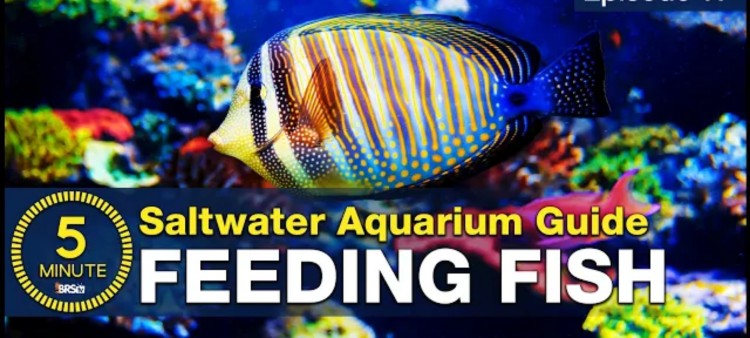A Complete Guide to Feeding Your Saltwater Fishes the Right Way
- Nov 14, 2021
- Anshika Mishra
- 167 0 0

In this article, you will learn how to feed your fish. There is a right way and a wrong way, and you are going to learn what it is. There are two folds to feeding a fish, and the first one is giving them the right nutrition whereas the second, overdoing it is the cause of all kinds of issues. So here we are going to fish that right balance.
Note
Do note that this guide is only applicable for fishes with everyday dietary needs. If your wet pets have complex nutritional needs, then try reading out specific fish guides for better care.
Though food will keep all of your fish alive if that is the only goal, these little guys are our new pets, and the goals are usually more than that. If you treat them to write, some of them will be with you for decades.
Nutritive Care
In terms of nutritional care and getting the right foods, there are four main concerns:
- Nutrient content
- The similarity of their natural diet
- Coloration
- Nutrient Density
You can approach it in various ways, but mostly a mix of a variety of fish food is going to produce the best results.
Nutrient Content
The nutritional content in fish food mostly contains protein and fat content. Protein is what a fish will use to build muscle tissues, and fat is one of the primary energy sources. Therefore, every pack of fish food will have protein and fat content right on the label. With dry food, 50% protein and fat in the low teen is a pretty good standard to meet or exceed.
Frozen food that has a lot of water weight, 12% protein, and upwards of 2% fat represent some f the better food options.
Natural Diet
Second, with similarity to a natural diet. Frozen foods seem to be a bit more palatable and similar to fish's natural diet. But, this means that the primary ingredients are aquatic-based and not fruits, corn, or terrestrial animals.
Similarity to natural food is about choosing foods natural to a fish's diet. For instance, the Tangs eat a lot of algae. So, incorporating algae into their diet is valuable, likely even necessary for normal metabolic function.
Coloration
Many fishes cannot synthesize desirable colors on their own. At least not in quantity desirable by reef aquarists. The additive of green in red edible pigments via diet is a very effective way of really getting that color pop from your fish.
Nutrition Density
Pellets are about 5-10 times as nutrient-dense by weight as frozen food. That means, they can eat much less and get the same nutrition. But, that also means 5-10 times the chances of overfeeding. So, it is just a reality that those who feed frozen foods are way less likely to overfeed their tanks as pellets. Just, something to keep in mind.
So, we suggest you feed the frozen food one day adn then mix the two pellets.
Overfeeding
Giving the right amount can be tricky; take the amount that your want to feed because you like feeding the fish, and cut that down to 80%, and that is probably the right amount.
Yes, it is a very tiny amount, but their bellies are small. You can use the feeding rights to le the food hydrate and sink. The rings tend to make it easier for the fish to get as much as possible of the food that you add, rather than letting it get lost in the taking.
If you find yourself overfeeding, this is what is going to happen. All the extra food is going to break into nitrate and phosphate in the tank. Nitrate and phosphates are essentially planted fertilizers. So, they feed the undesirable algae growth, something common in new tanks.
So, in that spirit, there is a sure-fire sign of overfeeding. Algae growth or continuous rising nitrate and phosphate levels will eventually lead to algae growth. The concern should be less about hitting the perfect numbers and more about making sure it isn't continually rising in new tanks.
Suppose nitrate and phosphate are continuously rising. It is simple to feed less, and it will stop. However, if you can't help it and you like providing them, you will have to do more frequent water changes or up your filtration game. Something like a better skimmer, filter socks to catch the water, or refugium that grown algae remotely to uptake waste from adding too much food.
So, while you pick up your food, consider a phosphate checker. They work way better than test kits at low levels.






About author